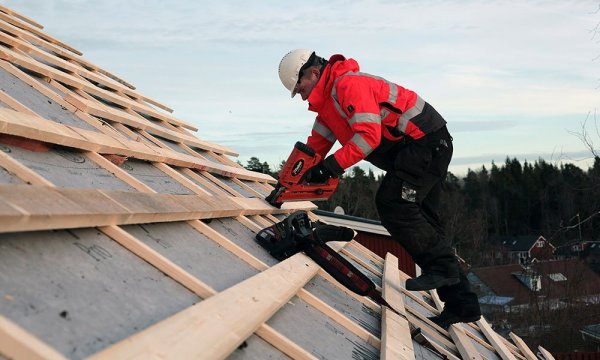New blinking is frequently mounted with a brand new roof. If blinking drops or comes free it can cause extreme damage to your home. It is important to be sure it’s mounted properly to avoid needless damage. One piece that ought to be included on every top replacement estimate is underlayment. Underlayment is a level of protective substance between the roof terrace or plywood and the shingles. Usually called felt paper, it’s the first coating of waterproofing for the roof.
Manufacturers enhance the underlayment with fiberglass to improve and fight tearing, make installment simpler and increase their waterproofing effectiveness. Suppliers are constantly establishing new underlayment technology. Newer synthetic underlayment more increases the effectiveness, ease & protection to put in and increases longevity. Some suppliers are suffering from organic and natural underlayment products Takläggare.
It’s usually recommended to utilize underlayment from the same manufacturer as your tiles because they are created to perform together. It might be required for a valid warranty. A company can choose the very best kind of underlayment for the roof substitute on the basis of the kind of roof and environment in that you live. When you yourself have any questions regarding their decision, they are the very best reference for the particular project.
Drip side is still another crucial and occasionally overlooked section of a roofing or re-roofing job. Even though manufacturers suggest it, and some involve it for a legitimate warranty, some technicians do not include trickle side on the estimates. Spill side is metal pieces used along gutter lines, eaves and some rakes. It prevents water from finding beneath the tiles and harming the deck plywood and safeguards fascia. Correctly applied trickle edge will expand the life of the roof and more defend the house from water damage.
Drop edge is not expensive to add in a roof substitute project and the benefits considerably out way the cost. The goal of a ceiling is to guard the home from the elements; wind, water, snow, etc. In most areas, ice and/or water certainly are a concern you can’t ignore. Snow and water safety should really be discussed for almost every residential roofing project and will likely look on your estimate. Snow and water barriers allow proper water flow preventing damage caused by large wind and water storms and ice build-up called ice dams. It clearly sticks to the plywood top deck providing a second line of defense to the underlayment. The barrier is put on probably the most weak elements of the roof. Depending on the form of ceiling this might be the valleys, eaves and rakes, or the whole terrace surface. Technicians could also suggest applying it about chimneys and other areas where escapes are likely to occur.
A pit may be the direction shaped by the intersection of two sloping top airplanes to offer water runoff. Due to the level of water driving throughout that section of a roof, it is very important to think about how the location will be protected when exchanging an asphalt shingle roof. You can find different ways for shingling the region with dimensional asphalt roofing material. Closed reduce valleys are hottest aesthetically. In a sealed reduce pit program, tiles from one side of the pit expand throughout the valley while tiles from the other side are cut straight back several inches from the pit centerline. Any blinking is not exposed. When using the start reduce area roofing process the flashing is visible. Start reduce valleys may be used to create visible curiosity or improve features on some design styles.
Some technicians uses snow and water guard beneath the shingles, the others can select to set up steel flashing. Further, some contractors may deploy both for additional protection. A specialist roofing contractor will contemplate many factors and make a recommendation regarding the most practical way and type for the precise project. An in depth estimate may contain these recommendations.